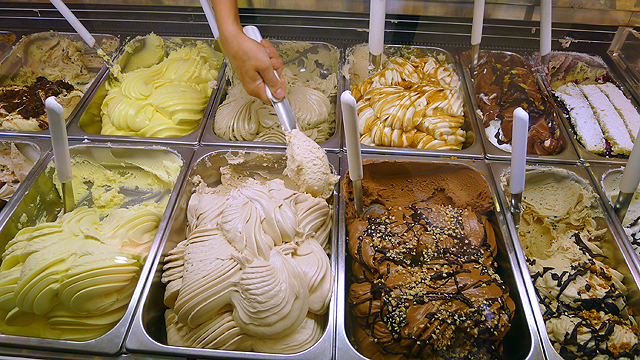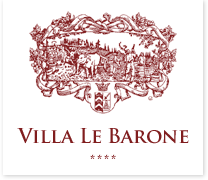
Gelati (“Gelato” in the singular, “gelati” in the plural) are famous worldwide. Guests can enjoy them throughout Tuscany, in Florence where it was invented, and of course at Villa le Barone, where we make our own sherbets.
But what is the origin of this ice cream we are all crazy about? The ice cream and sherbet’s origin is not very clear. Pliny the Elder tells the habit the Romans had to prepare various kinds of ice cream and sherbet with honey and crushed ice mixed with fruits. Iced drinks consumption was widespread. The snow came from the Vesuvius or Etna volcanoes and was sold on by street vendors. The ice was kept during the summer in a kind of deep well insulated with straw. The Italian word “Gelato” comes from the Latin ” gelatus ” which means ” frozen”. The words “sherbet ” or “sorbet” ( in Italian “Sorbetto”), derive from the Arabic “sherbet ” (fruity ice) but, others say, it derives from the word ” sharber”, to absorb, to drink. Indeed, after their conquest of Sicily in the eighth century, the Arabs reintroduced again these iced fruit juices, but compared to the original simpler mixture of fruit juice and snow, Arab recipes were a little more sophisticated: the citrus juice and sugar were mixed with crushed ice to get some kind of glossy liquid.
But it was during the Renaissance that the great tradition of Italian ice cream was born with its two “inventors”, the Florentines Ruggeri and Buontalenti. Ruggeri, a poultry dealer, but cook in his spare time, won in the early 15th century a culinary competition at the Court of the Medici’s of Florence with a frozen blend of fruit, cream and zabaglione (egg flip), that immediately got a great success. Ruggeri’s fame reached the ears of Catherine de Medici, about to go to France to marry Henri Duke of Orleans and future king of France. Catherine took Ruggeri in her suite, because, according to her, he was the only cook able to compete with the French chefs. Thus, at Catherine’s de Medici and Henri II’s wedding feast, it was possible to taste the following specialty for the first time “sweet and fragrant iced water”. Shortly after, Buontalenti, architect and sculptor, also responsible for organizing feasts for the Medici’s, prepared an ice cream made from milk, honey, egg yolk, a few drops of wine, flavored with lemon and bergamot. A huge success!

But the art of ice cream and sherbet further developed in Sicily, as the variety of fruits and the nearby snow of Mount Etna were an inexhaustible source of supply for refined iced preparations and the invention of new flavors. Sicilian manufacturers began exporting ice creams and sherbets to Naples and further on to Florence, Milan, Venice, and eventually to France, Germany and England. It is a Sicilian, Francesco Procopio dei Coltelli who opened in Paris in 1686 a coffee shop “Le Procope ” (still existing and famous), and started commercializing its own ice cream. In the 19th century, Italian immigrants brought their ice cream to America and England.
Since then, the ice cream became widespread throughout the world, with a myriad of flavors. Of course each ice maker developed its own recipes, but cream, milk, fresh fruit, sugar… are the main ingredients used in the preparation of ice. In sherbets, no cream but at least 25 % of fruit, water and sugar.
Savouring ice creams and sherbets in Florence, Siena or in our boutique hotel Villa le Barone in Panzano in Chianti is a must! And at Villa le Barone, our cooks prepare themselves delicious sherbets with peaches, apricots and other fresh fruits!
